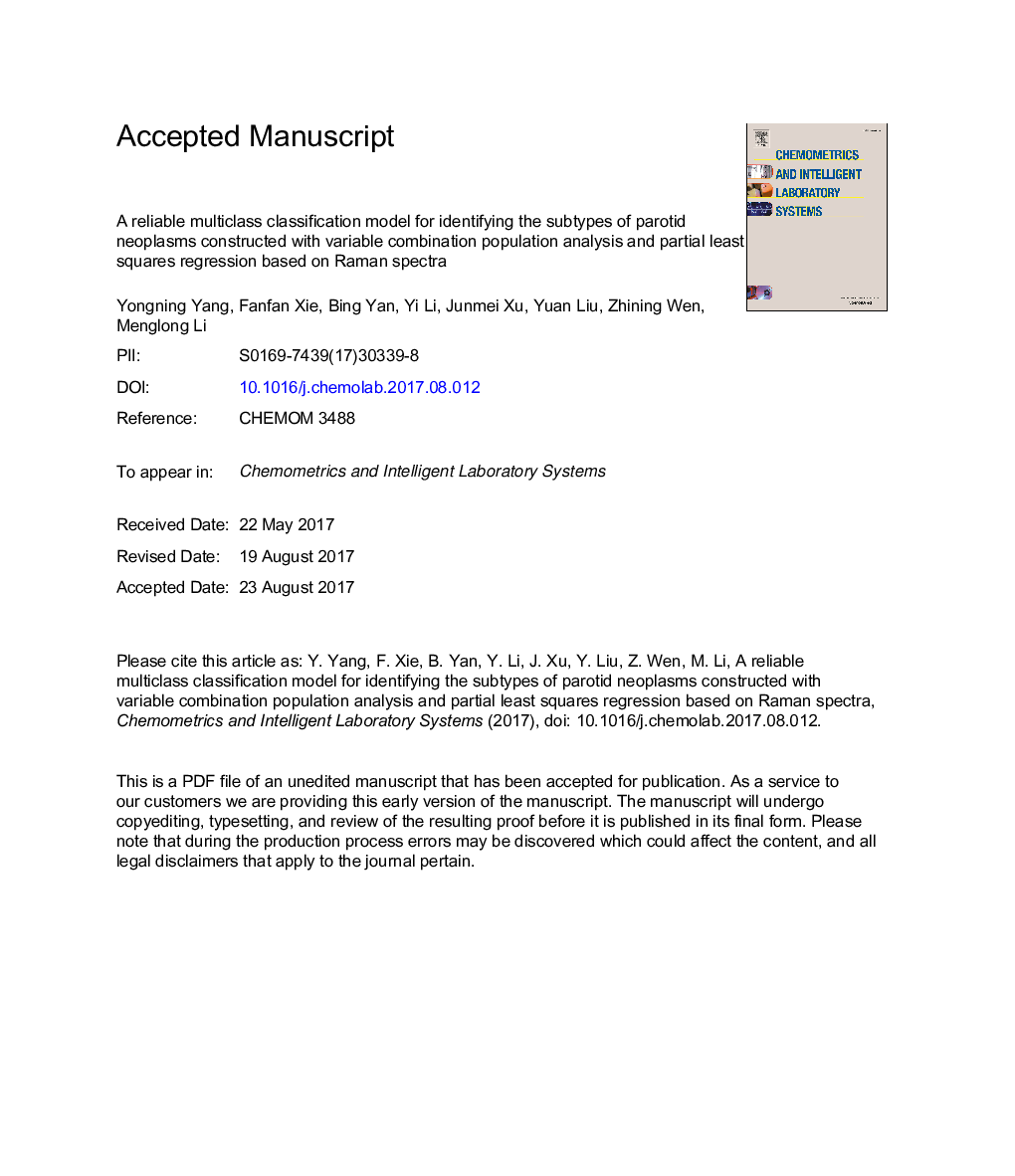| Article ID | Journal | Published Year | Pages | File Type |
|---|---|---|---|---|
| 7562516 | Chemometrics and Intelligent Laboratory Systems | 2017 | 29 Pages |
Abstract
Pleomorphic adenoma (PA), Warthin's tumor (WT) and mucoepidermoid carcinoma (MEC) are three common subtypes of salivary gland tumors, for which the occurrence site is located in the parotid gland. Accurately diagnosing the subtypes of parotid tumors plays a vital role in the surgical treatment. Unfortunately, the current studies mainly focus on the binary classification of parotid tumors. The preoperative multi-classification of them has still been underexplored. For the purpose of broadening the application area of the predictive models and facilitating the clinical preoperative diagnosis, we suggested a multi-classification model, which was constructed by combining the variable combination population analysis (VCPA) algorithm with the partial least squares regression (PLSR), to simultaneously discriminate the three subtypes of parotid tumors as well as the normal parotid gland tissue based on the Raman spectra of the tissue samples. In addition, we investigated the impact of generating Raman spectra from different sampling locations on the reliability of the predictive models. For the validation set, the overall accuracy in predicting the subtypes of parotid tumors and the normal parotid gland tissue was 0.867. Similarly, the accuracies achieved by the models constructed with the Raman spectra from two different sampling locations were 0.877 and 0.883, respectively, indicating the minor influence of the sampling locations on the predictive models. Our findings can be helpful for establishing the method of rapidly diagnosing the salivary gland tumors preoperatively in clinics. Moreover, the characteristic wavenumbers used in model construction were highly associated with the variations of the structures and contents of nucleic acids, collagen, proteins, lipids and DNA/RNA in gland tissue, which revealed the mainly difference among three types of parotid tumors and can be conductive to better understanding the molecular mechanisms of them.
Related Topics
Physical Sciences and Engineering
Chemistry
Analytical Chemistry
Authors
Yongning Yang, Fanfan Xie, Bing Yan, Yi Li, Junmei Xu, Yuan Liu, Zhining Wen, Menglong Li,
